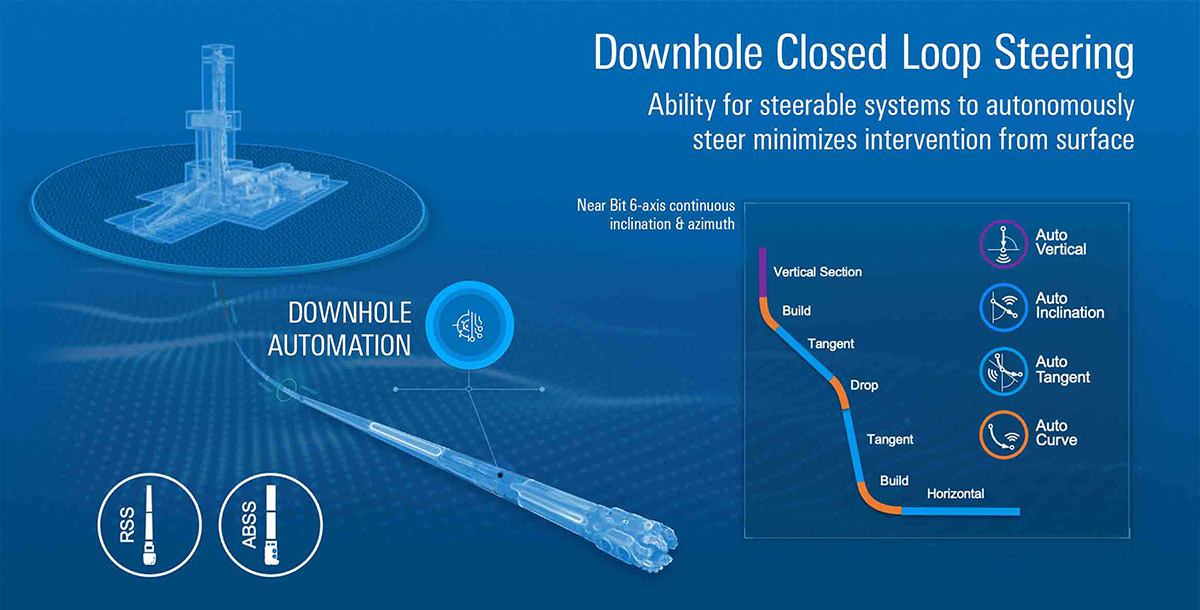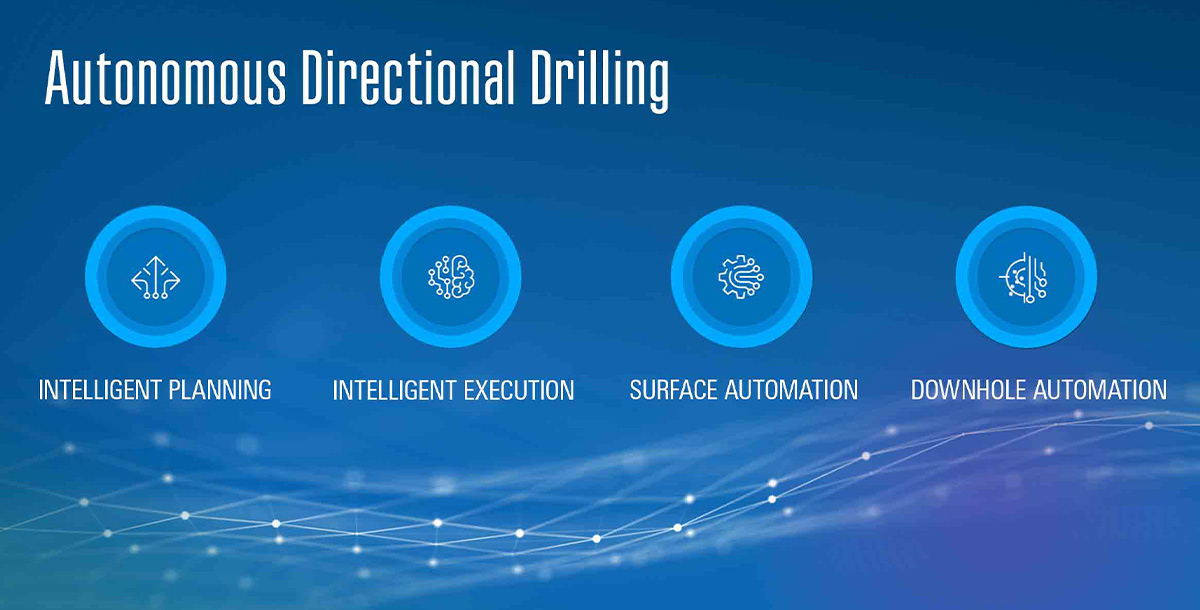
(Source: KoSSSmoSSS/Shutterstock.com)
[Editor's note: This article originally appeared in the January issue of E&P Plus. Subscribe to the digital publication here.]
The oil and gas industry is facing an unprecedented challenge to operate more efficiently and sustainably than ever before. The industry will be unable to meet this challenge without using disruptive technological innovations. More specifically, the well construction domain needs to transform and can do so by leveraging intelligent and autonomous systems.
An autonomous and self-steering bottomhole assembly (BHA) that is supported via a fully integrated data architecture eliminates siloed and independent workflows and harmonizes all aspects of well construction operations. The end result is an autonomous system that can drill wells for any field, rig or trajectory in the most efficient and consistent manner possible. Through increased efficiency and consistency, operators can deliver better drilling outcomes and economics, which enables optimal equipment and power utilization, minimized HSE risks and a reduction of the carbon footprint.
Autonomous journey
Enabled through recent digital innovations, autonomous directional drilling (ADD) is now positioned to answer the call to transform well construction operations. Making ADD a reality, however, has taken more than 18 years of continuous development. A structured road map was used to guide the journey to autonomous capabilities.
The early phases of this journey were largely driven by monitoring, assisting and other singular automation capabilities that define the directional drilling workflows used in operations every day. These capabilities included trajectory monitoring and projections, anti-collision monitoring and downhole singular automation algorithms, such as inclination hold.
In the next phase of the road map, the intelligent system is capable of supporting analytical decision-making by combining and unifying multiple support features. The system becomes aware of the directional drilling workflow and assists with managing all steering decisions. The DrillOps on-target well delivery technology unifies directional drilling workflows with other well construction workflows, which enable rig automation.

To reach the ADD vision, the final step in the journey provides autonomous well construction capabilities that utilize all relevant data, such as downhole logging while drilling, formation evaluation, mud logging and drilling fluids. This drives intelligent automation that surpasses existing operational capabilities and ultimately transforms how wells are constructed.
Pillars of autonomous directional drilling
When taking a holistic view of what would be required to deliver ADD, it was clear that the technology must be capable of supporting all aspects of the process, not just what happens at the well site or on the BHA. As such, the focus for ADD includes four key pillars: intelligent planning and intelligent execution, in addition to surface automation that complements downhole automation.
Intelligent planning. Well construction operations are initiated in the planning phase. For ADD applications, a predictive steering workflow is used that leverages the DrillPlan coherent well construction planning technology to take advantage of cloud computing and machine leaning models. Doing so enables the drilling engineers to utilize data and learnings from previous applications to ensure the best tendency response out of the BHA, while also mapping out the capabilities versus the demand of the planning trajectory. This workflow combines the IDEAS integrated dynamic design and analysis platform and data pipelines, resulting in automated analysis that is used to optimize the BHA and well trajectory, and contributing to the digital drilling program.
Intelligent execution. The digital drilling program that was completed in the intelligent planning phase is used to drive the directional drilling adviser, which is an automated system that facilitates the analytical tasks that traditional directional drillers would take while steering and executing the well trajectory. This system monitors the environment, captures real-time surface and downhole data, and determines the current and projected position of the wellbore.
Contextual data from the intelligent planning phase and objects such as trajectory targets, expected BHA tendency and operating parameters are then used to determine what needs to change in steering to reach the next target while ensuring all future targets and total depth position are satisfied.
The directional drilling adviser supports motors, rotary steerable systems and at-bit steerable systems regardless of tool or hole size. This is deployed at the edge and has a parallel native cloud workflow that is used to support remote operations, thus providing consistent and repeatable directional drilling performance that is transparent to stakeholders across all domains.
Surface automation. Surface automation begins with a data acquisition system that utilizes the digital drilling program to drive edge-related workflows such as demodulation with smart telemetry, automated survey management, smart alarms and general well monitoring capabilities. This facilitates data, insights and connectivity to support remote engineers so the interaction between the well site and the office is seamless and contains all context related to critical decision-making.

The surface steering aspect addresses the mechanization of the physical steering activity, whether it is downlinking to the BHA or steering a positive displacement motor. This is further enhanced by a direct link to the directional drilling adviser system that passes on digital commands for execution regardless of location, while ensuring critical approval roles such as the driller remain front and center.
Automated energy management workflows provide insight into drilling disfunctions and drilling performance aspects like shock and vibration and ROP optimization. This capability also prioritizes and manages drilling parameters that are defined by the pre-job operator-approved road map.
Downhole automation. For nearly two decades, there have been downhole steering capabilities in development, with continuous improvements focused on new functionalities and optimizing algorithms to drive steerable systems. In the early days, this started with automating the specific inclination, then on to more advanced capabilities such as auto vertical that enables drillers to rely 100% on the tool to keep the well vertical without any surface intervention. The next challenges included addressing tangents, horizontal sections and providing the ability to hold and manage both inclination and azimuth.
However, despite these significant downhole automation achievements, addressing curves, whether 2D or 3D, build or turn sections were deemed too difficult to automate and remained a manual task. With ADD, however, this challenge has been overcome, as 3D curves can now be drilled autonomously without any intervention from the surface, enabling a complete focus on drilling performance and optimization.
Aspiration to reality
Recent successes indicate the journey to ADD has reached a significant milestone.
In the intelligent planning space, predictive steering has been utilized in North America land to help multiple operators plan and execute one-run curves and laterals. In one example, predictive steering enabled an operator to increase the intended dogleg severity (DLS) of curves based on the modeled expected tendency. This provided the operator with the confidence to safely drill a 10-degree/100-ft DLS curve, which was significantly higher than wells that were previously drilled using conventional methods.
The ADD digital acquisition system was used on more than 750 wells in 2020 and accumulated over 120,000 hours of below rotary table operations. Ten wells have been executed using the auto-curve downhole closed-loop automation algorithm, which has eliminated the need for downlinking from surface. Operators have realized up to a 20% increase in ROP while drilling the curve. These runs, both onshore and offshore, were achieved in basins ranging from the North Sea to the Middle East to North America, and addressed both 2D and 3D curves in various hole sizes.
Autonomous directional drilling directly addresses the oil and gas industry’s challenge of delivering more efficient and sustainable operations. While still evolving, ADD drives procedural adherence to produce consistent and repeatable results, while also enabling greater efficiency and sustainability, thus transforming the way wells are constructed.
Recommended Reading
PHX Minerals’ Borrowing Base Reaffirmed
2024-04-19 - PHX Minerals said the company’s credit facility was extended through Sept. 1, 2028.
SLB’s ChampionX Acquisition Key to Production Recovery Market
2024-04-19 - During a quarterly earnings call, SLB CEO Olivier Le Peuch highlighted the production recovery market as a key part of the company’s growth strategy.
BP Restructures, Reduces Executive Team to 10
2024-04-18 - BP said the organizational changes will reduce duplication and reporting line complexity.
Matador Resources Announces Quarterly Cash Dividend
2024-04-18 - Matador Resources’ dividend is payable on June 7 to shareholders of record by May 17.
EQT Declares Quarterly Dividend
2024-04-18 - EQT Corp.’s dividend is payable June 1 to shareholders of record by May 8.





